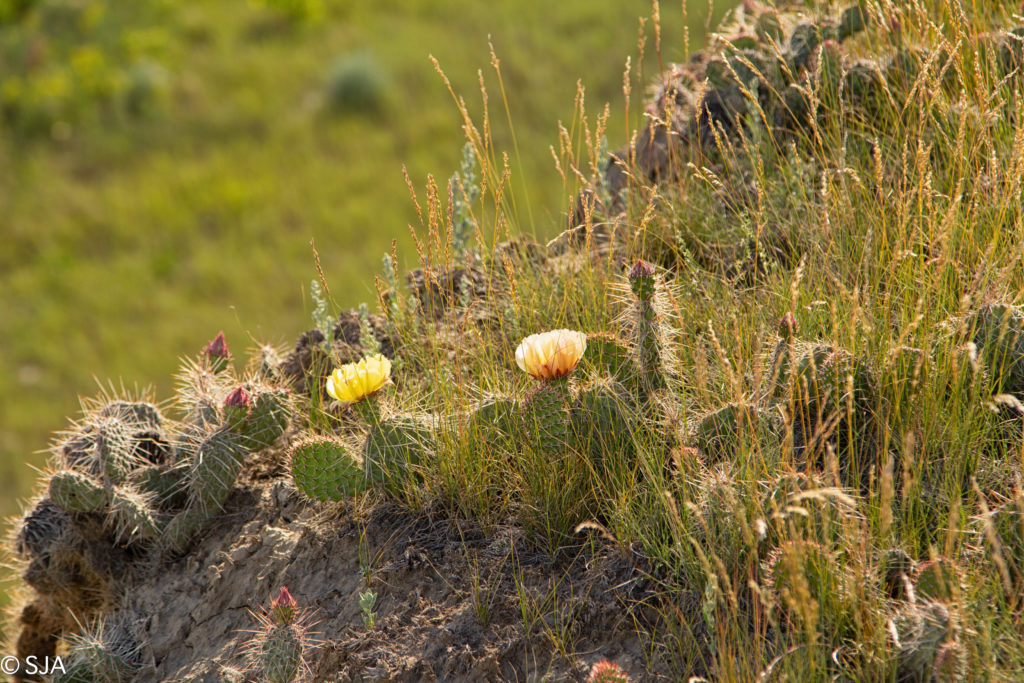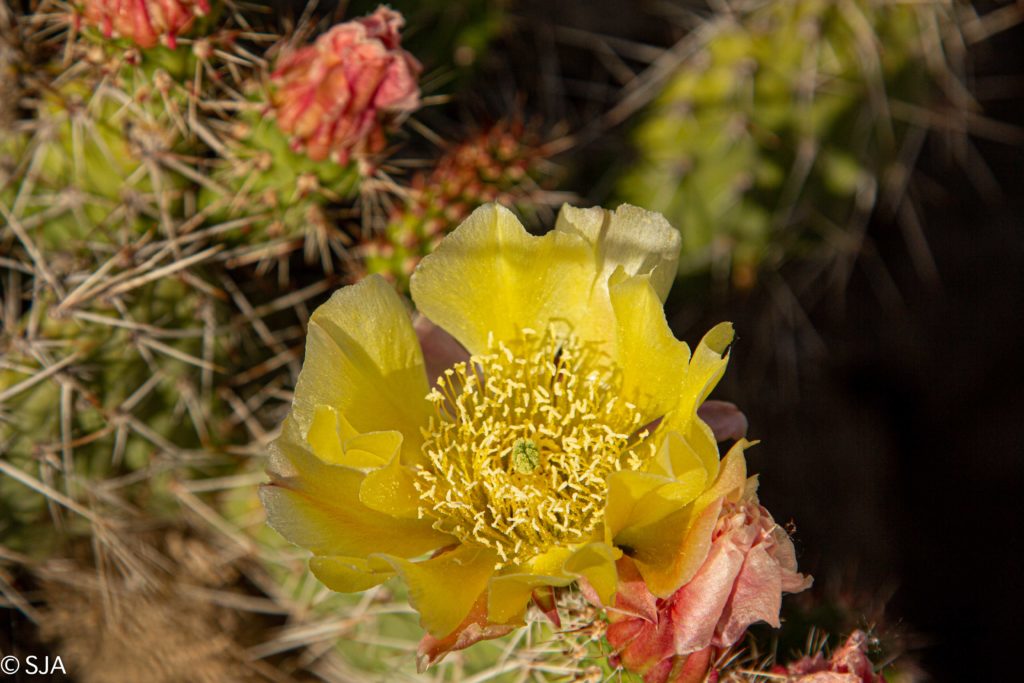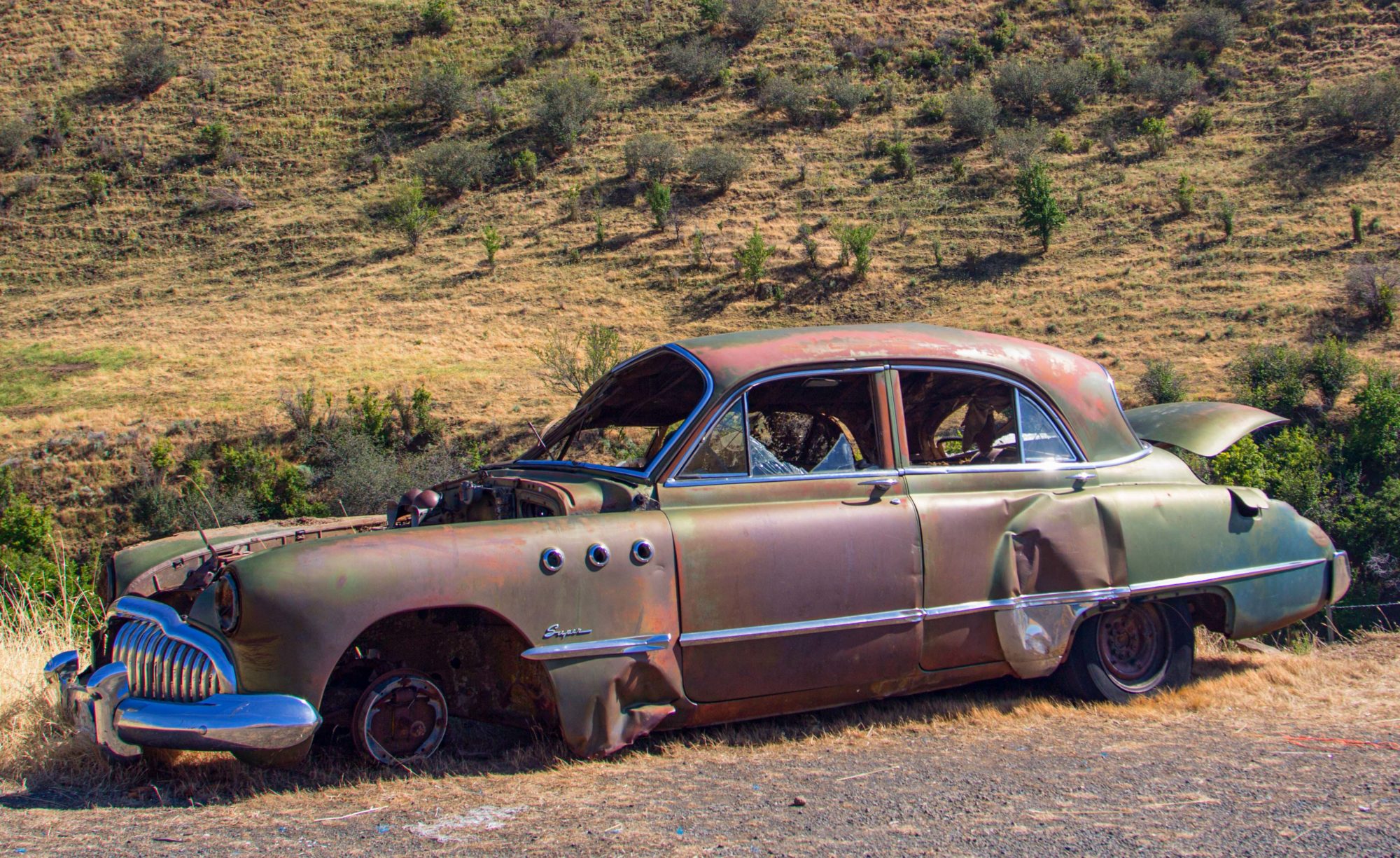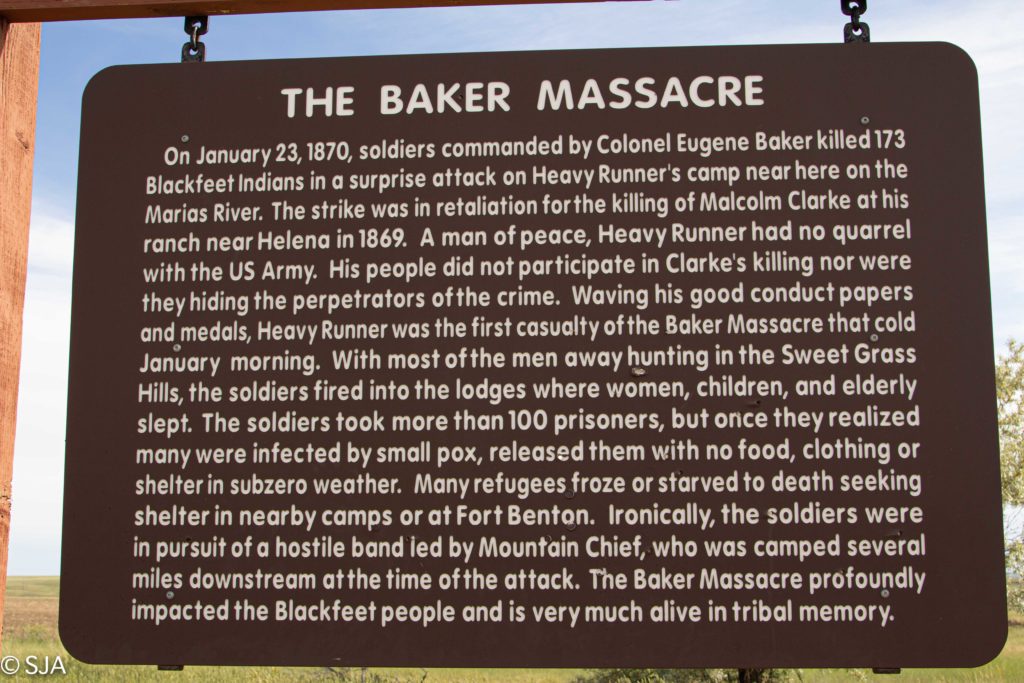The only sounds were from the soft ripples of the Maris River that flowed lazily at the foot of the steep bank carved by the years. An occasional rustle of grass added harmony to the river’s song. Prickly pear in full bloom dotted the countryside adding a splash of color to the dry prairie grass.
The land across the river was a sacred place, at one time home to a band of Piegan Indians. Bluffs rose high above the broken prairie behind where the Indian Village once stood. The winding river offered protection on all other sides. A few trees stood as quiet sentries, the leaves shimmering and stirring occasionally as they were caught in a warm breeze blowing across the parched land.

Prickly Pear 
I stood in reverent silence so as not to disturb the memories of slaughtered innocence. I was an intruder, an outsider, looking through the glass of time, observing from a distance, unwilling to encroach upon the reverence that demanded silence. No sound was needed, for silent cries from the ground resounded and echoed from the bluffs beyond – sounds of sick women, elderly men and children stricken with small pox, cries of babies stripped from their mothers’ arms, cries of disbelief as Heavy Runner waved the paper of safe conduct from the Indian Bureau just as bullets struck his chest. Among the resounding silence were also cries of, “This is the wrong camp!” as the drunken Major led the attack on that cold snowy winter day.
Events from two years earlier caused a domino effect that led to the massacre. An article by Dave Walter in the Montana Magazine (March‑April, 1987) tells that “horse stealing at the Clarke ranch set off a chain of events which led to the Baker Massacre. A relative of Malcolm Clarke’s wife, Owl Child, was at the Clarke ranch in ‘67 when someone made off with his horses. Owl Child got even by stealing some of Clarke’s horse. Clarke then followed Owl Child to his lodge and brought the horses back. Ill feeling continued. Two years later Owl Child shot Horace in the face and his cohorts murdered Malcolm Clarke. The army then swung into action. Colonel Baker led a detachment from Fort Ellis (at Bozeman) and attacked the Indians in the winter quarters on the Marias River. A Pikuni (Piegan) village of mostly women and children was complete destroyed.”

Marias River
There is a twist to this story that has been passed down through our family history. Henry and Andrew Gibson married Brannin sisters. They operated the toll road at “Gateway to the Mountains” in Prickly Pear Valley. Malcolm Clarke’s ranch was near the Gibson ranch. Stanton Brannin spent some time with the Clarkes. It is said that he was one of the men with Horace Clarke when Owl Child’s horses were taken.
More and more people were sucked into the vortex, not even knowing they were pawns in a game that would turn into a battle, slaughter, that would take the very breath of life – there at the bend in the river.
You can read more about the Baker Massacre, aka Marias Massacre, at historynet.com.

